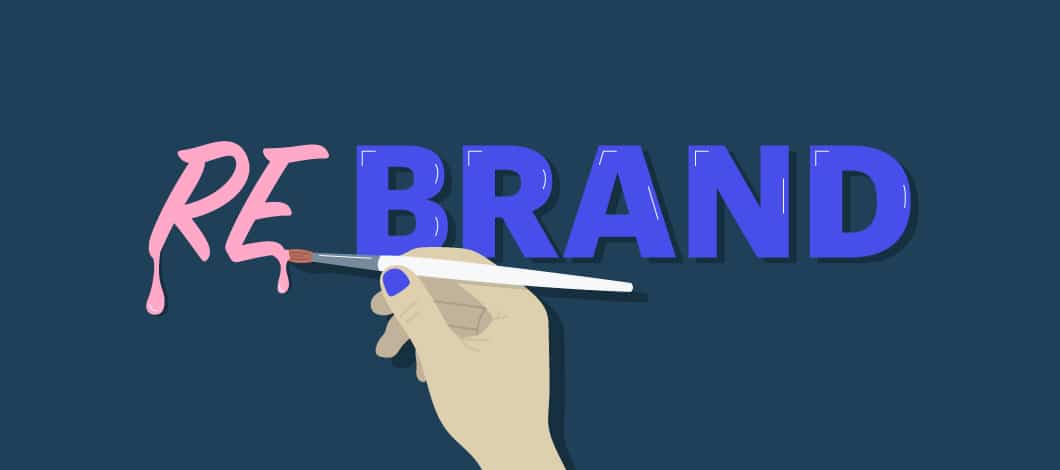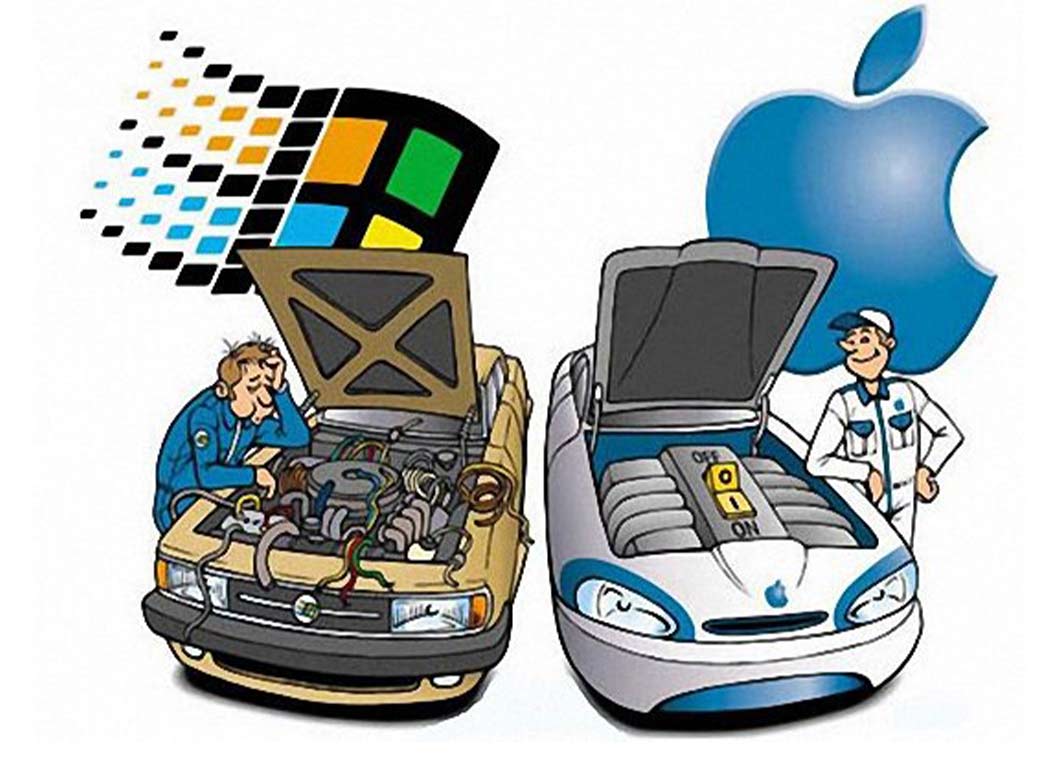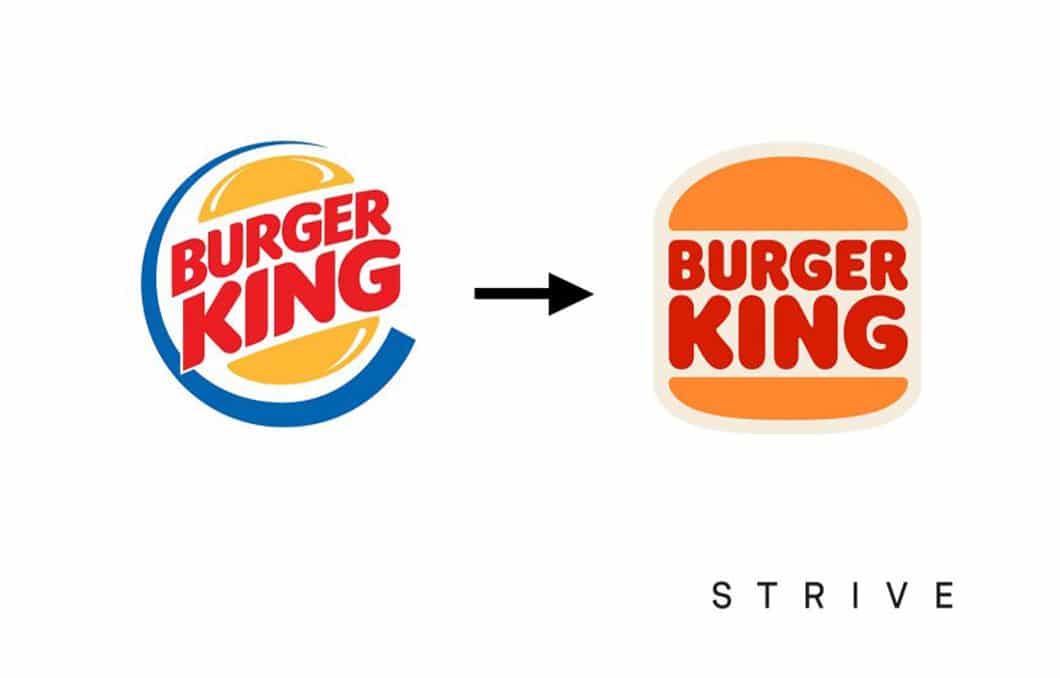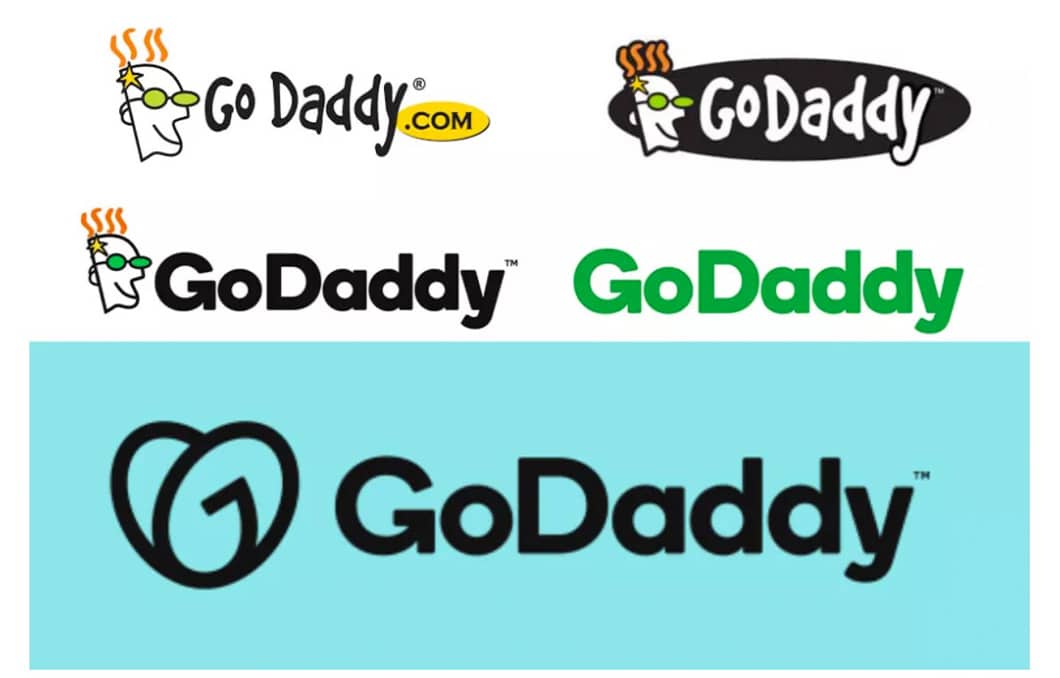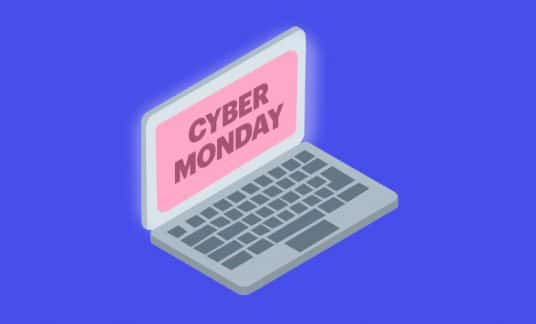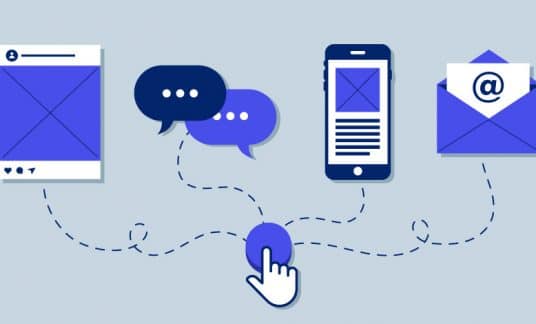It can be difficult to know when the right time is to rebrand your company.
Maybe you think you need a refresh, such as a quick logo update, to breathe new life into the business or keep up with the times.
Maybe you’ve been losing market share to competitors and want a new brand that’s on par with theirs to lure back customers. Or maybe an existing customer told you flat out, “I love your company, but your brand sucks.”
There are many reasons for rebranding, which we’ll cover below. You’ll learn why it is such an effective marketing tool.
What Is Rebranding?
The most simplistic definition of a brand is that it’s a look, a name, a design or other symbolic way of differentiating one company’s products from another.
However, a brand is much more than if someone can tell your package apart from someone else’s on a store shelf. A brand is more than your logo or name or what colors you use for graphics. The real heart of a brand is how it’s perceived by customers and what opinion they form of you based on those perceptions.
For example, beverage brand Coca-Cola expertly leverages perceptions to reinforce its strengths. The company’s long history allows it to shift away from focusing on building brand awareness, and instead to market what it is known for: originality and classic Americana.
Rebranding can take a few forms. You may only need a partial rebrand, such as slight changes to your logo to bring it up to date. Or, a full rebrand with a brand new company name, logo, new colors, new website, new marketing materials, new style, new target audience … the list goes on.
A rebrand can be as small and targeted or as large and sweeping as you need it to be.
How to Know When It’s Time to Rebrand Your Business
There are many reasons you might think it’s time to rebrand your company. Here are a few examples where rebranding is the best choice:
1. You Need to Differentiate From Your Competition
If a new competitor comes along with a name similar to yours or even just an overall visual style like yours, it may be time to rebrand. Or, maybe you’re both trying to attract the same target market and you need a strong brand that’s easily identifiable as different from that competitor so the audience isn’t confused.
A classic example is the “PC versus Mac” brand war with Microsoft and Apple. Both sold computers at a time when the target audience could easily become confused. Computers were so new, some wondered, ”Weren’t they all the same thing?”
To differentiate themselves, each needed a unique brand. Microsoft focused on business and educating the audience on the technical specs of its machines. Apple focused on sleek design and benefits, showing how simple these computers were to use instead of bogging the audience down with facts.
Each approach has merits but requires a very different brand to carry it out.
2. Overcoming a Negative Reputation or History
This one is a fairly obvious reason to rebrand. If your company was associated with negative events in the past, or something recent has happened to tarnish your reputation, it’s time to rebrand.
Of course, slapping a new logo or name on your company won’t do much if you don’t also take steps to address whatever the negative reputation was caused by. If you got a bad rap for customer service, you need to work diligently to improve that first, before you even think about rebranding.
Likewise with any sort of historical or social event. Many large brands were spurred into action in 2020 after the protests surrounding the death of George Floyd. A notable one is Quaker’s Aunt Jemima product line, which is removing the racially stereotyped brand and replacing it with Pearl Milling Company.
Rebranding in this way doesn’t always need to include a name change. Another consumer brand making changes to further racial equality is Land O’Lakes, a popular margarine. The brand revised its packaging to remove stereotypical depictions of Native American people while still keeping the name and overall packaging style.
3. Modernizing Your Brand
If your logo is outdated (20 years old, give or take) or you need a new stylish look to stay competitive, it’s time for a mini-rebrand. This is more of an evolution of your current brand than something completely new.
Burger King unveiled its new logo in early 2021, featuring a similar look to the old one but with more modern, clean lines and a refined color palette.
GoDaddy also launched a new logo in 2021, a modern and sophisticated one compared with their original featuring the “GoDaddy dude.” Their brand evolution has grown along with the company, now one of the world’s top domain and hosting providers.
4. Your Business Has Evolved
If you’ve gotten to the point that you’ve outgrown your brand, congratulations. But it can be a problem if you don’t take the time to rebrand now before it starts to hold you back.
Evolving past your brand can look like offering more products than you used to and your existing brand no longer fitting all of them. You can either rebrand your company to encompass this expansion, or perhaps create smaller sub-brands that better fit your new products.
Car brands are a good example of this. A Camry and a Tundra are different vehicles aimed at different target markets, but they’re both part of the overall Toyota brand. If you have products that are either so different, such as a sedan versus a pickup truck, or aimed at different audiences, try to break down your business like it’s a car brand and work out where everything fits best.
5. You Want to Reach a New Audience
If you’ve been trying to expand your business to a new audience but haven’t been able to, it’s probably your brand holding you up. What resonates with your current audience likely won’t with a completely new and different group.
If you want to reach new customers, you need your brand to serve those customers in order to attract them.
One of the most famous and successful rebranding examples is Old Spice, which sought to shed its reputation and appeal to the younger generation. Interestingly, Old Spice did this without the typical rebranding steps of updating its logo or style.
Instead, Old Spice rebranded its image by launching a campaign featuring a young, fit and aspirational male role model for a new target audience, former professional football player Isaiah Mustafa. The brand also renamed its body wash and deodorant scents with names to appeal to millennials, such as “Swagger.”
As a result of the brand image overhaul, Old Spice’s sales were up 125% versus the previous year.
6. You Feel Stuck and Uninspired by Your Current Brand
Just not feeling it? While it isn’t a good idea to completely renovate your entire company image based solely on a hunch, if something feels not quite right, it’s time to investigate if rebranding could be the answer.
Maybe your team feels in a rut. Your products aren’t as innovative as they used to be. Your marketing isn’t as enticing as it could be. Senior leadership is going through the paces instead of actively and aggressively pushing the company further.
In these cases, either a partial or full rebrand could be what everyone needs to unite in solidarity to keep pushing forward. A new brand can motivate your team, reignite their spark and passion for the business and be something to rally everyone behind.
Again, a new brand isn’t a business Band-Aid. If everyone is uninspired at work, it could be because of something much larger, such as a leadership problem. A shiny new logo isn’t going to fix that.
Before you rebrand, take time to dive deep into all aspects of your business and find what truly needs attention.
3 Huge Benefits of Rebranding
1. Reach New Audiences
Attract and sell to new audiences or locations, confidently and strategically with a new brand designed to draw new people in.
2. Attract Top Talent
High-performing employees want to work at high-performing companies. Updating your branding positions you as a growth-focused and energetic company people want to be part of.
3. Signals Growth and Strength
A new brand also signals growth and strength to new and existing customers and your team. Staff will feel re-energized and customers will feel valued. This is especially true for companies with long histories: A new brand shows you’re prepared for the future and are ready to grow and adapt without being stuck in the past.
Get Started Rebranding Now
If you found yourself nodding along to this as you read, it may be time to rebrand. So what are you waiting for?
Make an action plan. Analyze your business and see if there are any other issues you need to fix first, such as leadership, product quality or customer service issues. If you’re running a tight ship, get out there and find a branding agency to get the process started. They will be able to recommend a course of action, from a smaller partial rebrand to a full-scale completely new one.
Rebranding can be one of the most powerful things you can do for your company to grow your team, reputation and, of course, the bottom line.



